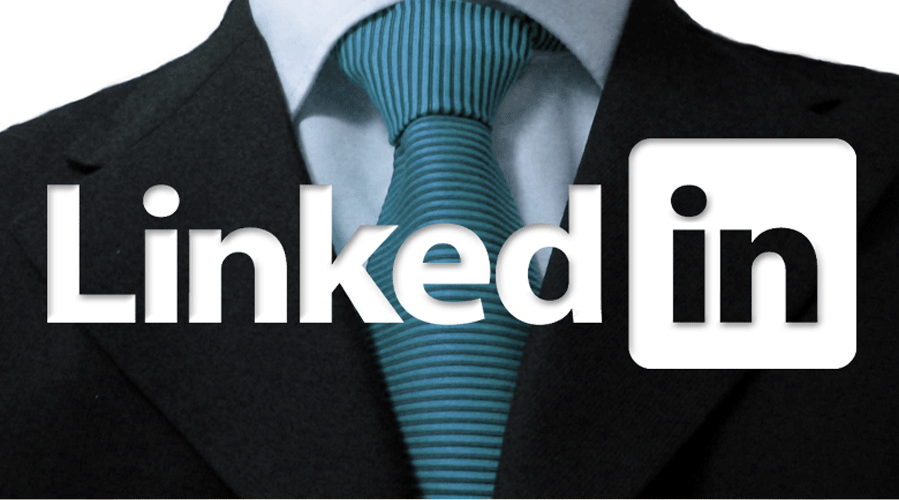
by Fronetics | Jun 9, 2015 | Blog, Logistics, Marketing, Social Media, Strategy, Supply Chain

Transfix is poised to disrupt and transform the trucking industry.
Uber, the on-demand driver for hire mobile service, has come to stand for disruption. The company has not only transformed the taxi industry, it has changed everything. Uber, Aaron Levie notes, is a “lesson in building for how the world *should* work instead of optimizing for how the world *does* work.” NY-based start-up Transfix is doing just this. With the launch of the company’s new app, Transfix is poised to disrupt the trucking industry.
The trucking industry is huge. Valued at $800 billion, the industry moves the majority (67%) of freight tonnage in the US. To move this volume of freight, more than 3 million trucks log close to 100 billion miles annually. It is, therefore, not surprising that “truck driver” is the most common job across the US. What is surprising is that the industry is riddled with inefficiencies. One of the greatest inefficiencies has to do with needless miles. Drew McElroy, co-founder of Transfix, estimates that U.S. commercial trucks drive 19 billion needless miles each year. That’s a lot of needless miles.
Together, the industry’s inefficiencies have a significant impact not just on the bottom line, but also on the cost of goods, the environment, our country’s infrastructure, traffic, and on the truck drivers themselves.
 Transfix takes the industry’s inefficiencies head on. Transfix is a digital on-demand freight marketplace. It provides industry-leading mobile technologies and location-based jobs offers for independent over-the-road truck drivers, as well as cloud-based management platforms for small carriers and shippers.
Transfix takes the industry’s inefficiencies head on. Transfix is a digital on-demand freight marketplace. It provides industry-leading mobile technologies and location-based jobs offers for independent over-the-road truck drivers, as well as cloud-based management platforms for small carriers and shippers.
Transfix’s app integrates with the company’s digital marketplace and is driver-centric. The app gives drivers the ability to manage loads, map their itinerary, and manage payments. The app also provides truck drivers with trip planning essentials including the location of showers, ATMs, weigh stations, fuel prices, and weather.
The app is available for iOS and Android.
Barnes and Noble is one of Transfix’s early adopters. According to McElroy, Barnes and Noble has realized improvements in their processes and has seen their deadhead runs (times driving without cargo) cut by at least 50%.
Transfix co-founders Drew McElroy and Jonathan Salama have identified how the trucking industry should work and have provided industry stakeholders with the tools to make it happen. Transfix is poised to disrupt and transform the trucking industry. With Transfix, we are witnessing the Uberfication of trucking.

by Fronetics | Jun 4, 2015 | Blog, Marketing, Social Media, Strategy

When thinking about where to focus your company’s social media presence, look at the numbers. LinkedIn generates 80% of B2B social media leads, more than Facebook, Twitter, and Google+ combined. A 2013 study conducted by Demo and CEO.com shared that “LinkedIn remains the one social media platform that is actually more popular with CEOs than the general public.” Why are company higher-ups turning to LinkedIn, the top professional social media platform?
LinkedIn currently has more than 350 million users, from over 200 countries and territories, and sees 2 new members added each second. A good amount of people, 40%, check LinkedIn daily. With these impressive numbers and LinkedIn’s goal of reaching 3 billion users, a company profile is bound to get traffic, especially if the company is utilizing the publishing format to share ideas and situate itself as a leading voice in the industry.
Your own employees, current and former, most likely have their own LinkedIn profile. They list their education, and of course, their work history. If your company does not have a LinkedIn page, there will be no logo to click on, no link, no exposure for you, and perhaps a loss of credibility. In today’s tech-savvy world, being engaged in social media platforms has come to be the norm for individuals and companies. People spend 1.72 hours on social media a day; let them find you easily during that time.
Leads:
With LinkedIn being the top social media site to generate leads, why not highlight your company there? Unlike Facebook, you have the ability to see who is looking at your company’s profile, and now, with LinkedIn’s newest analytics service, users can see who has been viewing their posts. Users can also see how many people liked and shared a post, and see more detail into demographics such as viewers’ industry, location, and job titles. By understanding who is looking at your company’s page or posts, you can see which demographic you’re reaching, and which you’re missing. You can reach out to those who show repeated interest and try to find ways to tailor future content to attract the people you’re not reaching.
Credibility:
Let your former and current clients and partners advertise your expertise for you. With the “recommendations” and “endorsements” features others can help build your level of trust with potential leads.
Coaches, consultants and recruiters also comb through LinkedIn looking for company matches for their clients. According to Executive Coach and Consultant, Stephenie Girard, “I rely on companies to use LinkedIn to increase their credibility, attract quality talent and expose their product or professional services. When organizations utilize LinkedIn in full capacity we gain access to the company’s values, culture, people and products – all of which are crucial pieces to the puzzle when matching a potential employee to employer.”
Connections:
Finding leads directly might be on your mind, but finding other business people and businesses that you can follow, monitor, learn from, and partner with, can also be incredibly valuable and may, in the end, bring you some leads and great business allies.
Once you have the connections made on LinkedIn, stay in touch with your old and new connections, clients, and customers. Many companies use LinkedIn as another platform to share press releases, white papers, videos, and product announcements.
According to Business Insider article LinkedIn May Not Be the Coolest Social Network, but It’s Only Becoming More Valuable to Businesses, “LinkedIn has the advantage of being the place for white-collar professionals to network, meaning its population is highly desirable since it is a high-income and highly educated user base.” Is LinkedIn right for you? If you’re looking for intelligent professionals, perhaps it is.

by Fronetics | May 7, 2015 | Blog, Marketing, Social Media
A recent study by Forrester found that Instagram users were 58 times more likely to like, comment, or share a brand’s post than Facebook users and 120 times more likely than Twitter users. Yet, in a survey of marketers, only 28% reported making it a priority. With more than 300 million active users, companies that have found a way to leverage this underutilized social network are boosting brand engagement and growing its customer base at an incredible rate. Ready to give it a try?
Stand out from the competition with these six strategies:


by Fronetics | May 7, 2015 | Blog, Marketing, Social Media
A recent study by Forrester found that Instagram users were 58 times more likely to like, comment, or share a brand’s post than Facebook users and 120 times more likely than Twitter users. Yet, in a survey of marketers, only 28% reported making it a priority. With more than 300 million active users, companies that have found a way to leverage this underutilized social network are boosting brand engagement and growing its customer base at an incredible rate. Ready to give it a try?
Stand out from the competition with these six strategies:


by Fronetics | May 6, 2015 | Blog, Leadership, Marketing, Social Media, Strategy
 There’s a great deal of buzz about social media in the business world – and for good reason. Marketing and communications professionals have made it de rigueur to tap into the popularity of social media networks to extend their brands into the digital world. But when it comes to executive use of social media, the field seems much more divided. Domo and CEO.com estimated that of the 500 leaders of the biggest companies in the US, 68% have no social media presence whatsoever. By leaving the social media management to marketers, these leaders are missing opportunities to connect with followers and expand their influence.
There’s a great deal of buzz about social media in the business world – and for good reason. Marketing and communications professionals have made it de rigueur to tap into the popularity of social media networks to extend their brands into the digital world. But when it comes to executive use of social media, the field seems much more divided. Domo and CEO.com estimated that of the 500 leaders of the biggest companies in the US, 68% have no social media presence whatsoever. By leaving the social media management to marketers, these leaders are missing opportunities to connect with followers and expand their influence.
Here’s why social media should be part of the game plan when it comes to matters of leadership.
Social media expands perspective.
Social media isn’t simply a mechanism for broadcasting company news or personal opinion. Many individual perspectives coalesce to create a social network. Asking questions of followers and participating in online discussions helps leaders gain new perspectives. Executives who do utilize social media tend to stick to LinkedIn at a rate greater than the general public, but increasing social participation beyond one network brings more heterogeneous insight and connects leaders to diverse groups.
Social media allows you to keep a finger on the pulse of industry trends and new research.
Participating digitally with like-minded professionals ties a leader into a broad network of resource-sharing. Having consistent access to relevant, curated articles about market and industry trends keeps leaders far ahead of peers who rely on just a few media outlets.
Social media connects your team.
Online social business tool Basecamp promises to help “wrangle people with different roles, responsibilities, and objectives toward to common goal.” Hosted in the cloud, Basecamp is a project management tool that helps managers and employees see exactly what’s happening with a given project. Its dashboard provides a snapshot of tasks and gives users – managers and employees – an opportunity to interact directly on the site. In addition to the real-time accountability it builds in, it also allows for real-time communication about projects, a concept that all but eliminates the need for private emails.
Social media inspires and motivates.
Hadyn Shaughnessy writes about top social media influencers in his contributing posts on Forbes.com. He believes stellar leadership is built firmly on relationships and that day-to-day operations of a business rely on a leader’s ability to connect, inspire, and mobilize employees. Leveraging social media is one way leaders are achieving that. But, he contends, passive consumers of social media – regardless of the number of followers – cannot be considered top influencers. Leaders who inspire are those who actively participate.
Social media builds relationships.
Among executives active on social media, the top benefit of maintaining “socialbility” is the direct access it provides to employees, media outlets, and the public. “Relationship building is one of the strongest skills sets related to leadership effectiveness,” says Jean Leslie, a researcher at the Center for Creative Leadership. Tying into social media networks allows leaders to establish connections with employees, building individual and collaborative relationships.
Leaders who embrace social media technologies are more agile and innovative; their companies are more likely to attract and retain top talent; and they tap more deeply into the ideas of their employees. It’s clear that there is value in social media, and for leaders looking to build the strongest brand for their company, it might not be just an option anymore.

by Fronetics | May 6, 2015 | Blog, Leadership, Marketing, Social Media, Strategy
 There’s a great deal of buzz about social media in the business world – and for good reason. Marketing and communications professionals have made it de rigueur to tap into the popularity of social media networks to extend their brands into the digital world. But when it comes to executive use of social media, the field seems much more divided. Domo and CEO.com estimated that of the 500 leaders of the biggest companies in the US, 68% have no social media presence whatsoever. By leaving the social media management to marketers, these leaders are missing opportunities to connect with followers and expand their influence.
There’s a great deal of buzz about social media in the business world – and for good reason. Marketing and communications professionals have made it de rigueur to tap into the popularity of social media networks to extend their brands into the digital world. But when it comes to executive use of social media, the field seems much more divided. Domo and CEO.com estimated that of the 500 leaders of the biggest companies in the US, 68% have no social media presence whatsoever. By leaving the social media management to marketers, these leaders are missing opportunities to connect with followers and expand their influence.
Here’s why social media should be part of the game plan when it comes to matters of leadership.
Social media expands perspective.
Social media isn’t simply a mechanism for broadcasting company news or personal opinion. Many individual perspectives coalesce to create a social network. Asking questions of followers and participating in online discussions helps leaders gain new perspectives. Executives who do utilize social media tend to stick to LinkedIn at a rate greater than the general public, but increasing social participation beyond one network brings more heterogeneous insight and connects leaders to diverse groups.
Social media allows you to keep a finger on the pulse of industry trends and new research.
Participating digitally with like-minded professionals ties a leader into a broad network of resource-sharing. Having consistent access to relevant, curated articles about market and industry trends keeps leaders far ahead of peers who rely on just a few media outlets.
Social media connects your team.
Online social business tool Basecamp promises to help “wrangle people with different roles, responsibilities, and objectives toward to common goal.” Hosted in the cloud, Basecamp is a project management tool that helps managers and employees see exactly what’s happening with a given project. Its dashboard provides a snapshot of tasks and gives users – managers and employees – an opportunity to interact directly on the site. In addition to the real-time accountability it builds in, it also allows for real-time communication about projects, a concept that all but eliminates the need for private emails.
Social media inspires and motivates.
Hadyn Shaughnessy writes about top social media influencers in his contributing posts on Forbes.com. He believes stellar leadership is built firmly on relationships and that day-to-day operations of a business rely on a leader’s ability to connect, inspire, and mobilize employees. Leveraging social media is one way leaders are achieving that. But, he contends, passive consumers of social media – regardless of the number of followers – cannot be considered top influencers. Leaders who inspire are those who actively participate.
Social media builds relationships.
Among executives active on social media, the top benefit of maintaining “socialbility” is the direct access it provides to employees, media outlets, and the public. “Relationship building is one of the strongest skills sets related to leadership effectiveness,” says Jean Leslie, a researcher at the Center for Creative Leadership. Tying into social media networks allows leaders to establish connections with employees, building individual and collaborative relationships.
Leaders who embrace social media technologies are more agile and innovative; their companies are more likely to attract and retain top talent; and they tap more deeply into the ideas of their employees. It’s clear that there is value in social media, and for leaders looking to build the strongest brand for their company, it might not be just an option anymore.


 Transfix takes the industry’s inefficiencies head on. Transfix is a digital on-demand freight marketplace. It provides industry-leading mobile technologies and location-based jobs offers for independent over-the-road truck drivers, as well as cloud-based management platforms for small carriers and shippers.
Transfix takes the industry’s inefficiencies head on. Transfix is a digital on-demand freight marketplace. It provides industry-leading mobile technologies and location-based jobs offers for independent over-the-road truck drivers, as well as cloud-based management platforms for small carriers and shippers.



